Nature on Baja California |
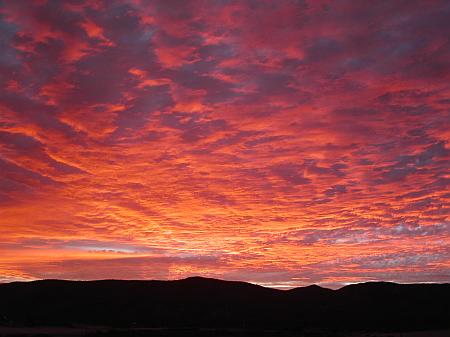 Never before we looked so often to the sky then in the last weeks. Amog the obligatory sunsets we also saw beautiful sunrises in the morning. At night Orion was our constant companion. Shortly befor we went to bed the Big Bear rised and very often the Milky Way could be seen. Nightsky near Mulege (mi) |
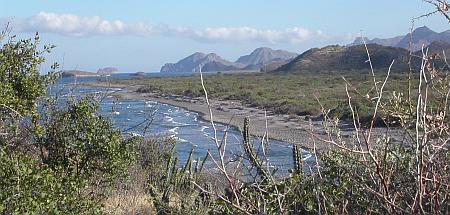 At the Eastcoast South of Mulege are a lot bays, which acted very tropically with all the palm trees and exotic shells on the beach. We could observe flying fishes, dolphins, pelicans, hummingbirds, and many other animals. Also scorpios live there (see at nuisances/animalia). (mi) |
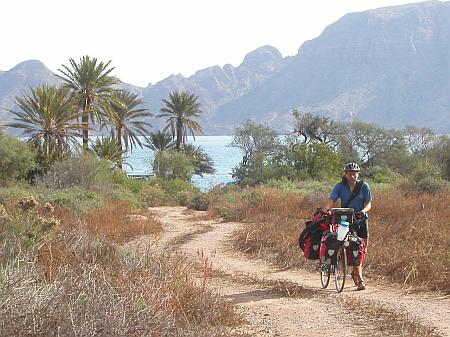 The first time after 8 months we had a break of the tour. Holiday means: no cycling, no bike-repair, no work at the website, and no helping at our hosts. That was really unusual! But nice: long camp fire nights with other globetrotters (see Who we met), cozy beach walks, and just hanging around. Farewell of our beach paradise "4 palm trees" (mi) |
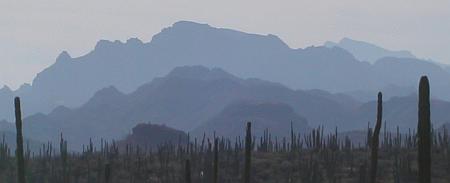 For all, who can't decide what to love more, the mountains or the sea: Baja California features both in one place. Even we took 2 months for Baja, we could not enjoy everything. Mountain panorama (mi) |
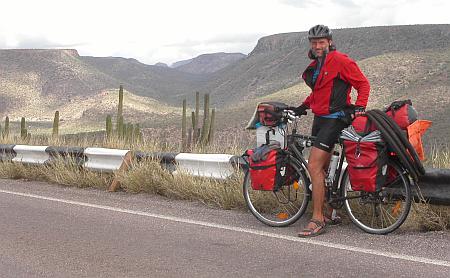 Following MEX1 on Baja you change several times from the Eastcoast to the Westcoast. And you always have to cross the ridge, which runs along the peninsula. Terrific views and the beauty of the meager mountains rewarded the hard klimbs. (mi) |
 Every year thousands of grey whales meet in the warm bays at the West Coast of Baja California to give birth to their babys and conceive directly new ones. Then they start the longest marmal-migration on earth along the West Coast of the States up to Alaska. The female whales are pregnant for one year and so they return in Winter again to Mexico and the cycle starts again. Picture in the harbor of Puerto Lopez Mateo (mi) |
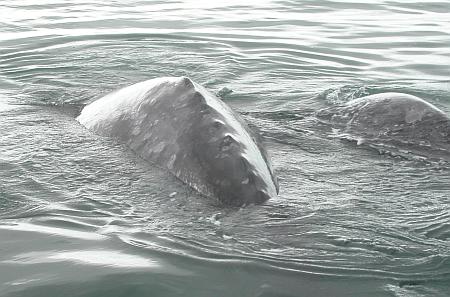 The skipper Geronimo took us with another couple early in the morning through the bay for two hours. We saw dozents of whales, mostly a mother with a baby. At it's birth the baby is already 12 to 15 feet long! One came directly to our boat and rubbed several times with it's back under the boat. With this tenderly gesture it nearly overturned our little boat! To experience whales so close is a very exciting and wonderful adventure. When their back lift slowly out of the water it is like the emergence of an island. Here you can see clearly the bumps near the tail of the mother (see also at the picture above). By the way you can hear the whals at night very good from the beach or the harbour. (ma) |
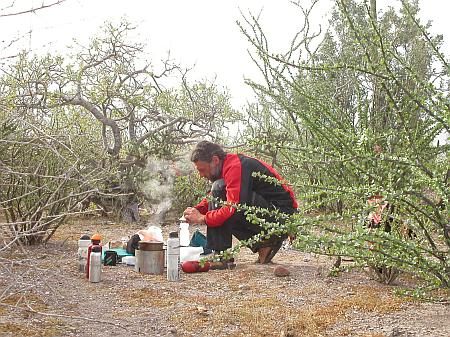 We always saw lonesome roads between the cactusses, which we could follow to find a quiet place for our camp. Nearly always we had a thorn-free spot. Only in the very Sout near La Paz endless fences frame the road. Ther we had to search a little more. Even if people could see our camfire from the road nobody was interested in disturbing us. Here Markus is boiling water for the last coffee-bag we got from Jim and Jan 1 in California. (mi) |
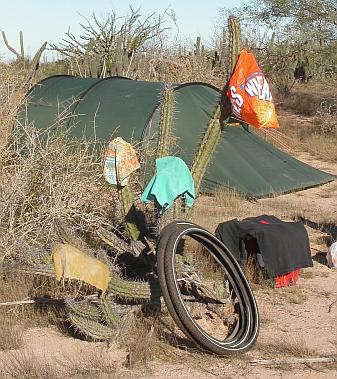 The desert- and hlafdesert-vegetation of Baja California has a great viarity of cactuses. Many of them are found only here like the "clothes-rack-cactus" (mi) |
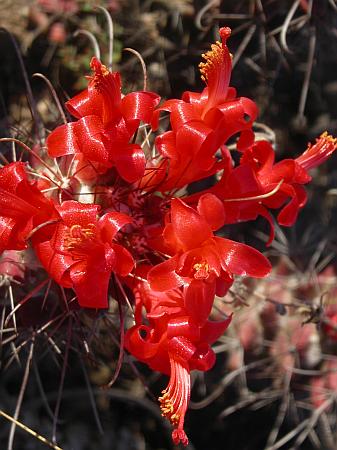 We've been on the gad on Baja from End of November 2003 until beginning of February 2004 and so we could yet see the first cactus blossoms. Spring announced itself everywhere with little, fresh-green leaves at the Sukkulents. (mi) |
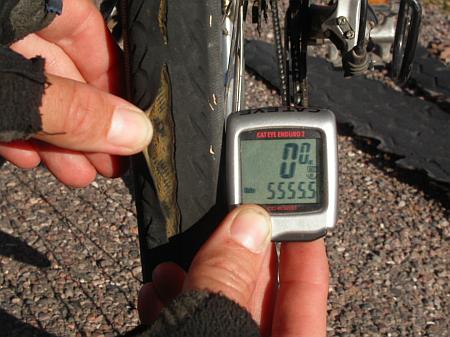 After more than 5555km (3470 Miles) and more and more rough roads the tires begin to wear out. Good for us, that we already carry the spare tires with thicker profile. The company "Schwalbe" gave us 4 tires, which were sent to San Diego by our friend Herbert. Many thanks! (mi) |